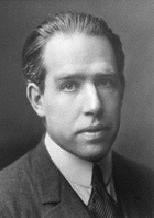Problem Solving by Niels Bohr

Sir Ernest Rutherford, president of the Royal Academy and Nobel Prize in Physics, told the following story, which serves as a magnificent example of the fact that it is not always easy to give the only correct answer to a question.
Some time ago, a colleague asked me for help. He was going to
put the lowest score in physics to one of his students, while
while this student claimed to deserve the highest score. Both,
the teacher and the student agreed to rely on the judgment of a third party, a disinterested arbitrator; the choice fell on me. Exam question asked: "Explain how to measure the height of the building with a barometer."
The student’s response was: “You need to go up to the roof of the building with a barometer,
pull the barometer down a long rope and then pull it back in and
measure the length of the rope, which will show the exact height of the building ".
The case was indeed complicated, since the answer was absolutely complete and correct! On the other hand, the exam was in physics, and the answer had little to do with the application of knowledge in this area.
')
I suggested that the student try to answer again. Giving him six minutes on
preparation, I warned him that the answer must demonstrate knowledge
physical laws. After five minutes, he never wrote anything.
Examination sheet. I asked him if he gave up, but he said that
He has several solutions to the problem, and he simply chooses the best.
Intrigued, I asked the young man to begin to answer, not
waiting for the expiration of the allotted time. A new answer to the question read:
"Go up to the roof with a barometer and throw it down, measuring time
the fall. Then, using the formula L = (a * t ^ 2) / 2, calculate the height of the building. ”
Then I asked my colleague, the teacher, if he was pleased with this answer.
He finally gave up, recognizing the answer is satisfactory. However student
I mentioned that I knew several answers, and I asked him to open them to us.
“There are several ways to measure the height of a building using a barometer,” the student began. "For example, you can go outside on a sunny day and measure the height
barometer and its shadow, as well as measure the length of the shadow of the building. Then deciding
simple proportion, determine the height of the building itself. "
“Not bad,” I said. "There are other ways?"
"Yes. There is a very simple way that sure you will like it. You take the barometer in your hands and climb the stairs, putting the barometer on the wall and making marks. By counting the number of these marks and multiplying it by the size of the barometer, you get the height of the building. Quite an obvious method. ”
“If you want a more complicated way,” he continued, “then tie to
barometer lace and swinging it like a pendulum, determine the value
gravity at the base of the building and on its roof. From the difference between these
values, in principle, you can calculate the height of the building. In the same case,
having tied a string to the barometer, you can climb with your pendulum onto the roof and, shaking it, calculate the height of the building according to the precession period. ”
“Finally,” he concluded, “among many other ways of solving this
The best problems are probably: take a barometer with you,
find a manager and tell him: “Mister manager, I have
wonderful barometer. He is yours if you tell me the height of this building. "
Then I asked the student - did he really not know the generally accepted
solving this problem. He admitted that he knew, but said at the same time that he was fed up with school and college, where teachers impose their way
thinking.
This student was Niels Bohr (1885-1962), a Danish physicist, laureate
Nobel Prize 1922
Source: https://habr.com/ru/post/9550/
All Articles